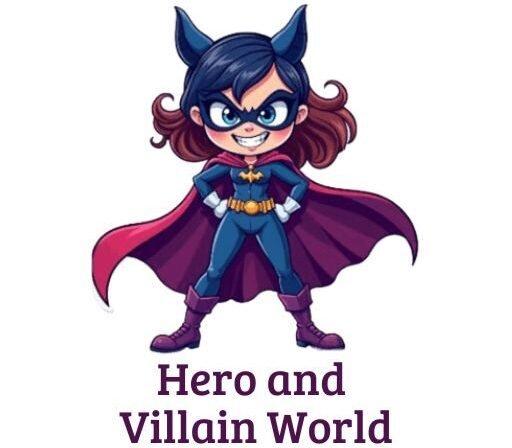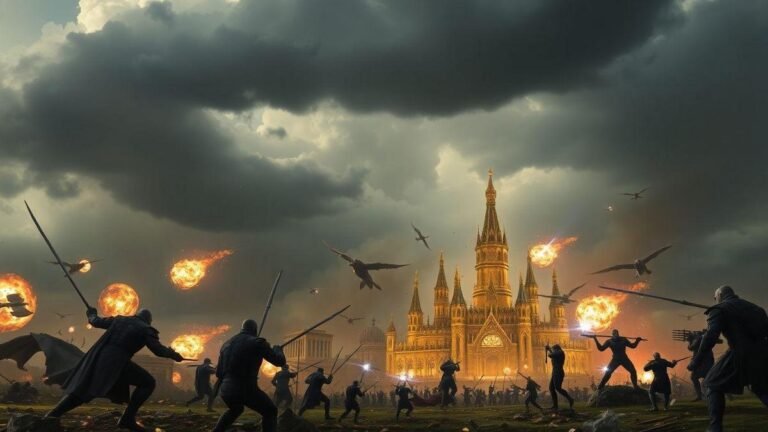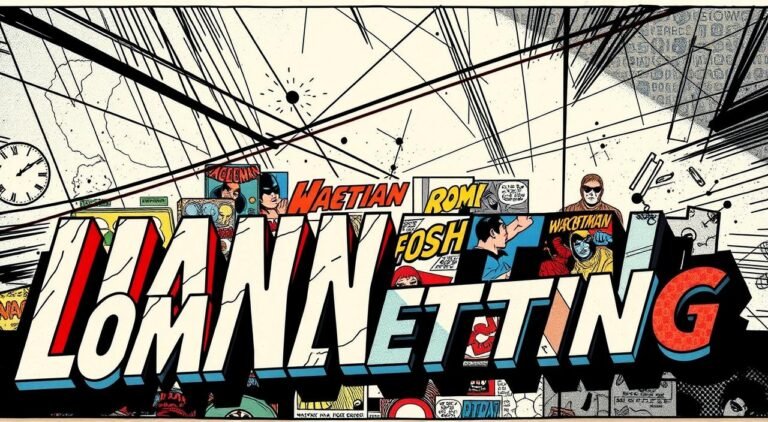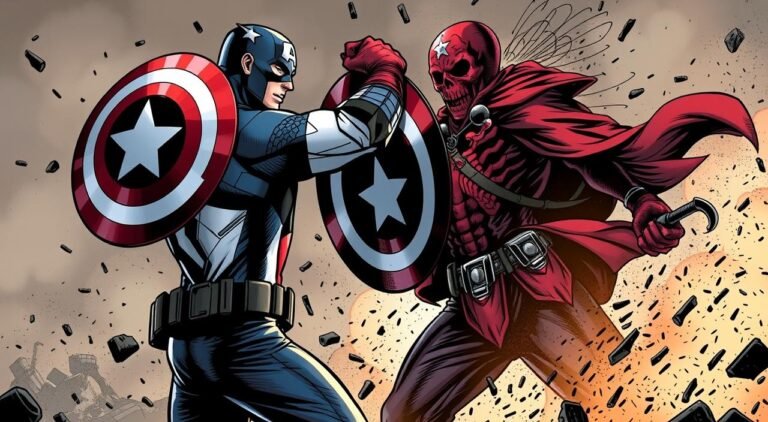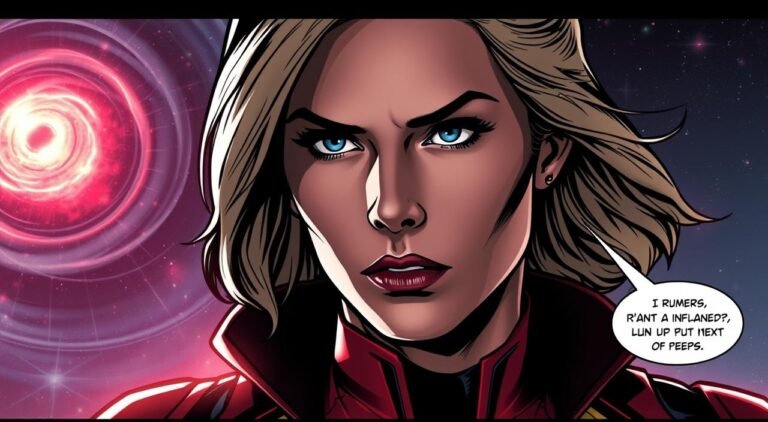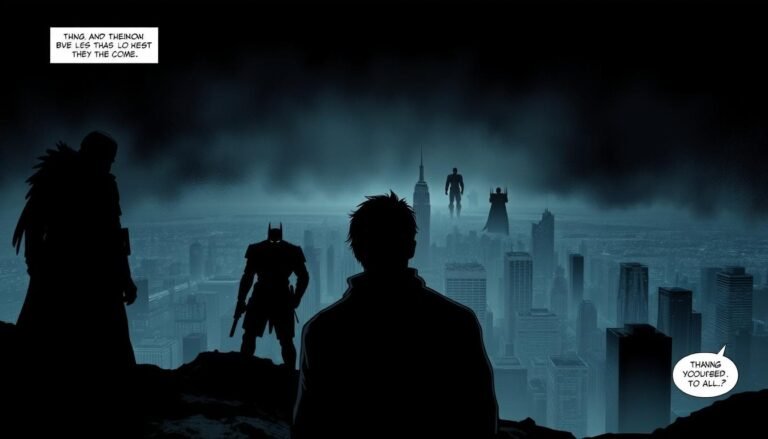Green Goblin’s Insanity and Norman’s Terror
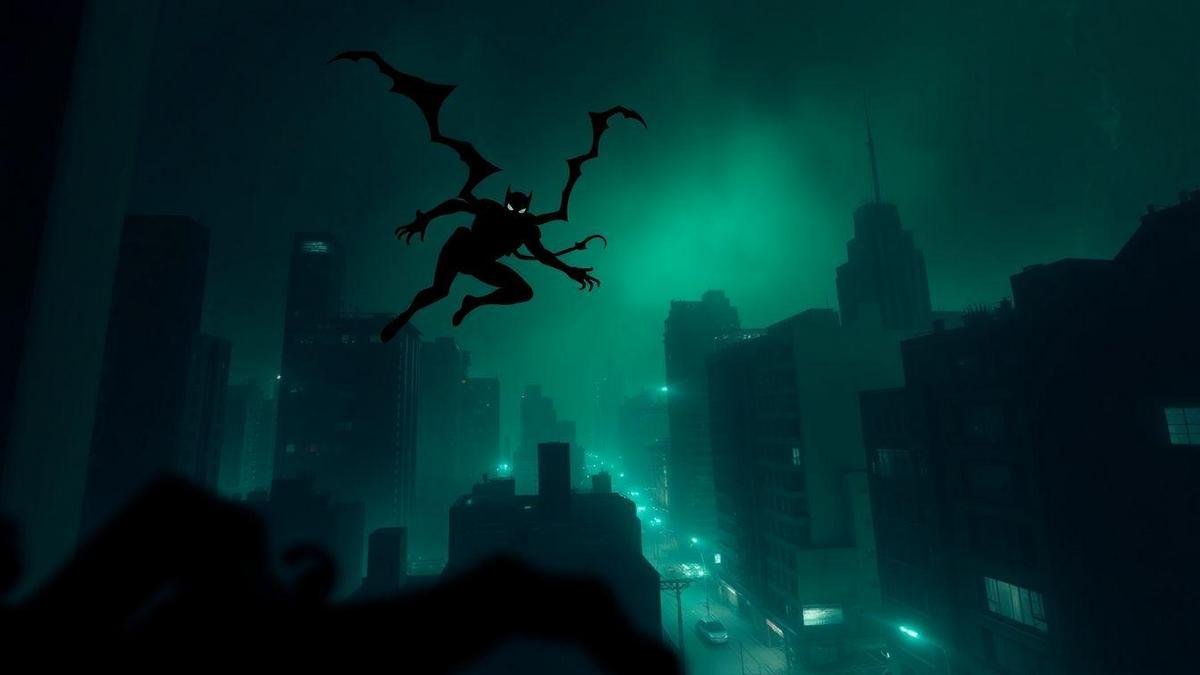
Green Goblin’s Insanity: The Terror of Norman Osborn is a deep dive into one of Marvel’s most intriguing characters. In this article, you’ll explore how Norman’s madness spins a web of chaos around him and Spider-Man.
You’ll uncover the psychological battles he faces, the impact of his dual personality, and what makes the Green Goblin such a unique villain. Let’s uncover the symbols of madness and how they shape heroic journeys in the Marvel Universe!
Important Points to Remember
- Norman struggles with his dual life.
- The Green Goblin represents chaos and fear.
- Norman’s terror is evident through his actions.
- Insanity leads to dangerous choices.
- Friendship and trust are tested in tough times.

Understanding the Green Goblin’s Insanity
The Origins of Norman Osborn’s Madness
Norman Osborn’s madness didn’t happen overnight. It all started with his experimentation. He was a brilliant scientist but also a bit reckless.
When he tested a serum on himself, things went haywire. This serum was supposed to make him stronger, but instead, it twisted his mind. The once-smart businessman became the Green Goblin.
His insanity grew from his failed experiments, leading him to see the world in a twisted way. This reflects the broader theme of how power can corrupt, a common thread in stories of iconic Marvel villains.
How Norman’s Terror Affects Spider-Man
Now, let’s talk about how Norman’s insanity impacts Spider-Man. Imagine being a hero and facing someone who knows your every move. That’s what Spider-Man deals with! The Green Goblin knows how to hit Spider-Man where it hurts.
He plays mind games, using fear and chaos to shake Spider-Man’s confidence. This dynamic is similar to the psychological effects seen in other characters, such as those explored in the psychological impact of the Green Goblin on Spider-Man.
Here’s a quick look at how this dynamic works:
| Impact | Description |
|---|---|
| Mental Strain | Spider-Man feels the pressure of facing a villain who knows him so well. |
| Physical Battles | The Green Goblin pushes Spider-Man to his limits in fights. |
| Emotional Turmoil | Norman’s personal connection to Peter Parker adds emotional weight to their conflicts. |
The Impact of Green Goblin’s Insanity on the Marvel Universe
The Green Goblin’s insanity doesn’t just affect Spider-Man; it sends ripples throughout the Marvel Universe. His chaotic actions create conflict and fear, influencing other heroes and villains.
The chaos he brings can change alliances and create new enemies. This theme of chaos and its repercussions is also explored in various story arcs, such as Dark Reign.
In the grand scheme of things, Norman Osborn’s madness is a driving force in many storylines. It shows how one person’s insanity can impact many lives. Heroes must band together to fight the terror he brings, making for some thrilling stories!
The Dual Personality Conflict of Norman Osborn
The Struggle Between Norman and the Green Goblin
Norman Osborn is a character with a fascinating and complex story. He’s not just a businessman; he’s also the Green Goblin. This duality creates a constant battle within him.
On one side, you have Norman, the father and CEO, trying to do right by his family and company. On the other side, there’s the Green Goblin, a villain who thrives on chaos and destruction.
This internal struggle can feel like a tug-of-war, with both sides pulling in different directions. This duality can be seen in many characters across comic book narratives, highlighting the philosophical aspects of vigilantism.
How This Conflict Shapes His Actions
Norman’s actions are often influenced by this conflict. When he’s feeling weak, the Green Goblin takes over, leading him to make choices he might not normally consider. This can lead to moments of brilliance but also to terrible decisions.
For example, when Norman is consumed by the Goblin’s persona, he might attack Spider-Man or even those he loves. This shows how the Green Goblin’s insanity can take control, turning Norman into a dangerous figure.
Here’s a quick look at how this conflict affects Norman’s actions:
| Aspect | Norman Osborn | Green Goblin |
|---|---|---|
| Motivation | Family, business, reputation | Power, chaos, revenge |
| Decision Making | Logical, caring | Impulsive, ruthless |
| Relationships | Nurturing, protective | Manipulative, destructive |
| Emotional State | Guilt, fear | Rage, thrill |
The Psychological Effects of Dual Personalities
Living with two personalities can take a toll on anyone. For Norman, this means battling emotions like guilt and anger. When the Green Goblin takes control, Norman often feels ashamed afterward. It’s like waking up from a nightmare and realizing you did something terrible.
This psychological strain can lead to anxiety, depression, and a feeling of being trapped. This struggle is echoed in many stories, emphasizing the role of unreliable narrators in storytelling.
In short, Norman’s struggle with the Green Goblin is a rollercoaster of emotions. He’s often caught between wanting to be a good person and the pull of his darker side. This conflict not only shapes his actions but also his mental state, making him a tragic figure in the world of comics.
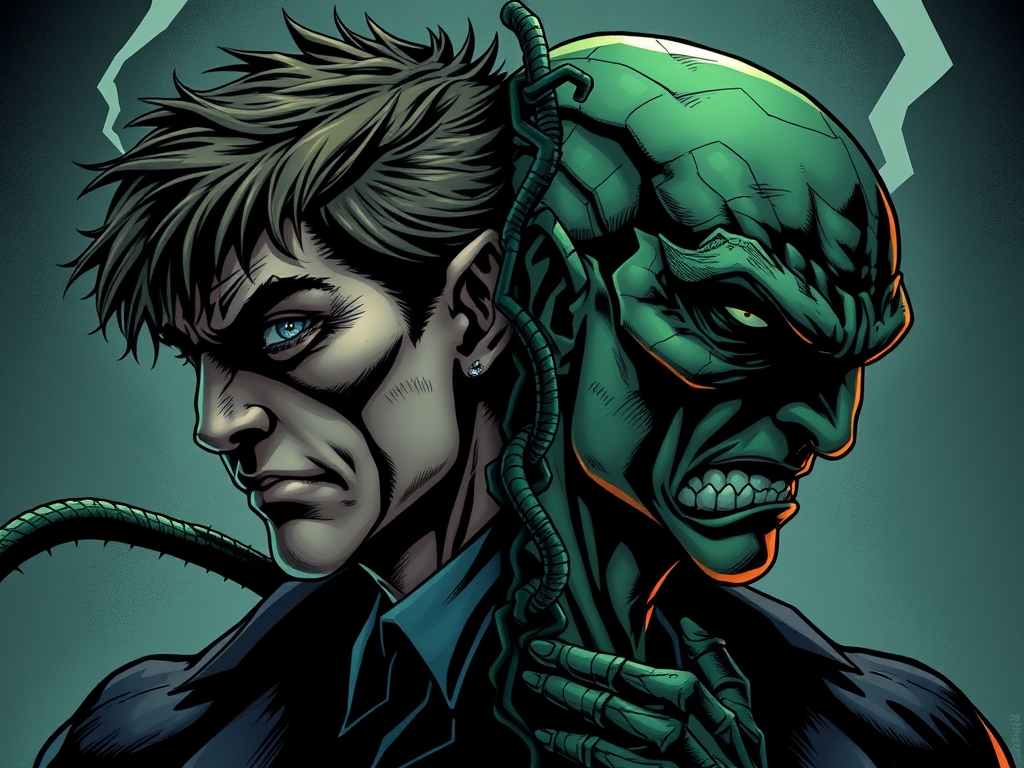
Exploring the Goblin Psychological Profile
What Makes the Green Goblin a Unique Villain?
The Green Goblin stands out as one of the most memorable villains in comic book history. Why is that? It’s all about his complex personality and the way he interacts with others. Unlike many villains who are just evil for the sake of it, the Green Goblin has layers.
He’s not only a threat to Spider-Man but also a reflection of Norman Osborn’s troubled mind. This complexity is what makes him a quintessential example among iconic Marvel villains.
- Dual Identity: Norman Osborn and the Green Goblin are two sides of the same coin. This split personality makes him unpredictable and dangerous.
- Personal Connections: He often targets those close to Spider-Man, like Mary Jane and Aunt May, adding a personal touch to his villainy.
- Technological Genius: With his gadgets and glider, he represents the mad scientist archetype, blending brains with brawn.
Analyzing Norman Osborn’s Fear and Motivations
Norman Osborn is driven by deep-seated fears and motivations that shape his actions. Understanding these can help you see why he becomes the Green Goblin:
- Fear of Failure: Norman constantly worries about not living up to expectations. This fear pushes him to extreme measures to prove himself.
- Desire for Power: He craves control, both in his personal life and in his business. This need for power often leads him down dark paths.
- Need for Acceptance: Norman seeks validation from others, especially his son, Harry. This need can make him act irrationally when he feels rejected.
The Role of Trauma in Goblin’s Insanity
Trauma plays a significant role in the Green Goblin’s insanity. Norman’s past experiences shape his mental state, leading to his transformation into the Goblin. Here are some key points:
- Childhood Trauma: Norman’s upbringing was filled with neglect and pressure. This left scars that fueled his later madness.
- Loss and Betrayal: Losing loved ones and feeling betrayed by friends adds to his instability. These feelings can trigger violent outbursts.
- Chemical Influence: The Goblin serum enhances his abilities but also amplifies his madness. It’s a double-edged sword that makes him more powerful yet less stable.
| Aspect | Impact on Norman |
|---|---|
| Childhood Trauma | Leads to feelings of inadequacy |
| Loss of Loved Ones | Triggers anger and violence |
| Goblin Serum Effects | Enhances powers but worsens insanity |
Green Goblin Symbolism in Comic Books
The Green Goblin as a Representation of Madness
The Green Goblin, one of Spider-Man’s most notorious foes, is more than just a villain. He symbolizes madness and chaos. Norman Osborn, the man behind the mask, struggles with his sanity.
His transformation into the Green Goblin reflects how mental illness can twist a person’s identity. This duality is a powerful theme in comic books, showing how one can be both a hero and a monster, akin to the themes explored in X-Men’s exploration of prejudice.
How Symbolism Enhances the Storytelling
Symbolism is a key tool in storytelling. It adds layers to characters and plots. The Green Goblin’s presence in Spider-Man’s world is a prime example. Here’s how it works:
| Symbolism Element | Description |
|---|---|
| The Goblin Glider | Represents freedom and chaos, allowing him to fly above the city, symbolizing his detachment from reality. |
| Pumpkin Bombs | These bombs symbolize destruction and unpredictability, mirroring Norman’s unstable mind. |
| The Goblin Mask | A mask that hides his true self, showing how madness can consume one’s identity. |
These symbols help readers connect with the story on a deeper level. They create a visual language that speaks volumes without saying much.
The Connection Between Insanity and Superhero Narratives
In superhero stories, insanity often plays a crucial role. The Green Goblin’s insanity isn’t just a plot device; it mirrors real-life struggles many face. It shows that even the strongest can be brought down by their inner demons.
This connection resonates with readers, reminding them that everyone has battles to fight. This theme is also prevalent in other stories, where antiheroes like Venom reflect similar struggles.
When you read about the Green Goblin, you see a reflection of fear, chaos, and the struggle for control. This adds a layer of realism to the comic book world. You can’t help but feel for Norman Osborn, even as he wreaks havoc. His journey is a cautionary tale, showing how unchecked madness can lead to destruction.

The Evolution of the Green Goblin in Comics
Key Story Arcs That Showcase Norman’s Terror
The Green Goblin, one of Spider-Man’s most notorious foes, has had his fair share of terrifying story arcs. Here are some key moments that truly highlight Norman Osborn’s menace:
- “The Night Gwen Stacy Died”: This iconic story arc is a real game-changer. It shows Norman at his most dangerous, as he takes the life of Gwen Stacy, leaving Spider-Man shattered.
- “The Green Goblin’s Return”: After a period of absence, Norman returns with a vengeance. His schemes become more elaborate, showcasing his twisted genius.
- “The Clone Saga”: This arc dives deep into the complexities of identity. Norman uses clones to manipulate and terrorize Spider-Man, testing the hero’s limits. This exploration of identity is a common theme in many comics, similar to Spider-Man’s own struggles with identity.
These stories not only show Norman’s brutality but also how he uses his intelligence to create chaos in Spider-Man’s life.
How the Character Has Changed Over Time
Over the years, the Green Goblin has transformed significantly. Initially, he was just a crazy villain with a pumpkin bomb. But now, Norman Osborn has layers. Here’s how he has evolved:
| Era | Character Traits | Notable Changes |
|---|---|---|
| Silver Age | Maniacal and simple villain | Focused on physical confrontations |
| Modern Age | Complex and multi-dimensional | Explores his mental health issues |
| Ultimate Universe | Tragic and sympathetic character | Shows a deeper backstory and motivations |
As you can see, Norman Osborn has become a more nuanced character, reflecting the changing times and readers’ expectations.
The Influence of Green Goblin’s Insanity on New Villains
Norman’s insanity has not only shaped him but also paved the way for new villains in the Spider-Man universe. His chaotic nature serves as a template for others. Here are some key influences:
- Hobgoblin: Inspired by the Green Goblin, Hobgoblin takes the chaos to new levels while trying to outsmart Spider-Man.
- Venom: The obsession and rage found in Green Goblin’s character can be seen in Venom’s relentless pursuit of Spider-Man, as explored in Lethal Protector.
- Carnage: This character amplifies the insanity, creating a dangerous and unpredictable threat.
These characters show how Norman Osborn’s madness has created a legacy of terror that continues to haunt Spider-Man and his allies.
The Impact of Green Goblin’s Insanity on Fans
Why Readers Are Drawn to Norman Osborn’s Story
When you dive into the world of comics, Norman Osborn, also known as the Green Goblin, stands out. His story is filled with twists and turns that keep you on the edge of your seat.
You might wonder, what makes his tale so fascinating? It’s the chaos and madness that draw readers in. Osborn’s struggle with his own mind creates a character that feels real and relatable.
Imagine a friend who always seems to have it together, but deep down, they are battling their demons. That’s what Osborn represents. His insanity isn’t just a plot point; it’s a reflection of the struggles many face in real life.
You might find yourself rooting for him, even when he’s doing terrible things. This complexity of character is a hallmark of well-crafted villains, akin to the depth found in the best single-issue comic stories.
The Lessons Learned from His Madness
Norman Osborn’s journey teaches us valuable lessons about human nature. Here are a few important takeaways:
- Duality of Man: Osborn shows that everyone has a good side and a bad side. It’s a reminder that we all have our battles.
- Consequences of Choices: His actions lead to severe repercussions. This highlights the importance of making wise choices in life.
- Redemption: Even the most troubled characters can seek redemption. It’s never too late to change.
Understanding Osborn’s madness helps you see the complexities of the human experience. It’s not just about good versus evil; it’s about the struggles that shape us.
The Role of Villains in Shaping Heroic Journeys
Villains like the Green Goblin play a crucial role in the stories of heroes. They challenge heroes, pushing them to grow and learn. Think of Spider-Man. Without Osborn, would he be the hero he is today? Here’s how villains impact heroes:
| Villain’s Role | Hero’s Response |
|---|---|
| Creates Conflict | Forces the hero to act |
| Tests Morality | Challenges the hero’s beliefs |
| Sparks Growth | Helps the hero become stronger |
These villains, especially Osborn, are not just obstacles; they are teachers. They make heroes reflect on their choices and grow into better versions of themselves.
Conclusion
In the wild world of comics, Norman Osborn and his alter ego, the Green Goblin, serve as a powerful reminder of the struggles we all face.
His insanity doesn’t just create chaos for Spider-Man; it resonates with readers on a deeply personal level. You’ve explored how madness can twist identity, shape relationships, and even reflect the duality of human nature.
As you turn the last page of this article, remember that every villain has a story worth telling, and every struggle can lead to valuable lessons. So, whether you’re a die-hard comic fan or someone just dipping their toes into the superhero universe, there’s always more to discover.
Don’t let the adventure stop here! Dive into more captivating articles at Hero and Villain World and keep exploring the rich tapestry of characters that make up our favorite stories!
Frequently Asked Questions
Green Goblin’s insanity comes from a mix of the Goblin serum and Norman Osborn’s mind. The serum messed with his brain, making him crazy.
Norman struggles with being the Green Goblin. He feels fear, anger, and sometimes power. It’s a scary ride for him as he battles his own mind.
Green Goblin’s craziness makes him unpredictable. You never know what he might do next. This unpredictability adds to his terror!
Norman’s terror creates distance between him and others. People fear him, and it ruins friendships and family ties. His madness takes a toll!
Green Goblin’s insanity shows the struggle of mental health. It reminds us to be kind and supportive to those facing their own battles.
